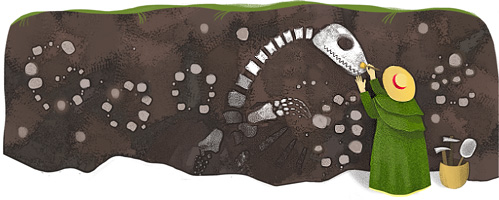Happy birthday to Mary Anning (21 May 1799 – 9 March 1847) – one of the most important women to influence the history of science.
I’m excited to see that Mary Anning – pioneering British female fossil hunter and palaeontologist – is rocking the Google doodle today, on what would have been her 215th birthday.
Anning made remarkable discoveries for any palaeontologist, but the fact she was a woman in the early 19th century and had low social standing – at a time when other scientists and natural historians were wealthy gentleman – makes it even more incredible (she was the daughter of a carpenter).
Her discoveries were made near Lyme Regis on the Dorset Coast in England. Aged 12, she found the first known ichthyosaur; she found the first two known plesiosaur fossils; and she found the first pterosaur fossil outside of Germany.
Later work went on to explain what coprolites – fossilised dung – actually were. Though these discoveries were groundbreaking, she was ineligible to join the Geological Society of London, because she was a woman.
Many of the incredible finds can be seen today in the Fossil Marine Reptiles Gallery of the Natural History Museum in London. They are beautiful fossils, so I always like to have a wander through when I’m in town.
According to the Natural History Museum:
“The greatest fossil hunter ever known was a woman from Lyme Regis. Mary Anning’s discoveries were some of the most significant geological finds of all time. They provided evidence that was central to the development of new ideas about the history of the Earth …
The spectacular marine reptiles that Mary unearthed shook the scientific community into looking at different explanations for changes in the natural world. William Buckland, Henry de la Beche and William Conybeare were some of the many scientists who owe their achievements to her. By the time of her death, geology was firmly established as its own scientific discipline.”
In 2010 the UK’s Royal Society included her as one of ten British women it said had most influenced the history of science.
Yet despite all this, Anning remains comparatively little known. Well done Google doodles for highlighting her contribution! Learn more about her on Wikipedia and at the Natural History Museum.


